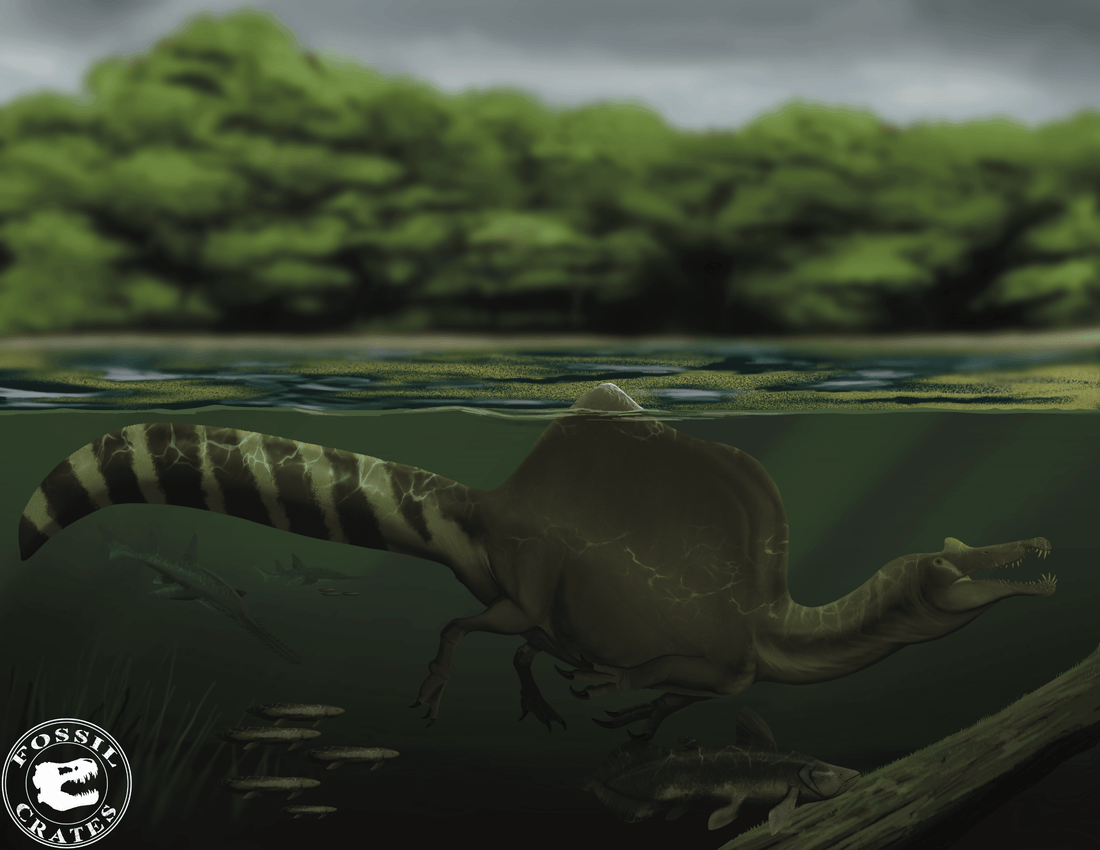Spinosaurus is one of the largest predatory animals to ever live on land. At over 50’ long it is the longest known theropod (meat-eating) dinosaur. Possibly exceeding 7 tons it is one of the heaviest carnivorous dinosaurs as well, outweighed only by Tyrannosaurus rex.

Spinosaurus was named in 1915 by German paleontologist Ernst Stromer. The bones were discovered in Egypt but taken back to Germany for study and display. In World War II the museum holding the bones was destroyed. Thankfully, Ernst had detailed illustrations of the bones made while he studied them. These images allowed paleontologists to confirm excavations made since the 1990s were of Spinosaurus.

Image from Stromer 1912
Spinosaurus is the first known semi-aquatic dinosaur. Its affinity for water wasn’t known until recently as Stromer reconstructed it as a regular meat-eating dinosaur walking around on 2 legs, simply with an interesting tall spine on its back.

Modified from Stromer 1936
Discoveries in the 2000s revealed it had heavier-than-average bones, short hind legs in relation to its body and other theropods, a long snout with teeth adapted to catching and holding slippery prey, and a tall tail that may have been used for propulsion like a crocodile.

The degree to which Spinosaurus spent time in the water has been hotly debated in the 2020s with one group suggesting it spent nearly all of its time in the water while another camp points out the huge drag the giant sail would cause, plus the fact the eyes and nostrils are positioned such it wouldn’t be able to breathe while stalking prey like a crocodile can and its body isn’t flexible like aquatic predators that are able to quickly move to capture fish. New discoveries will continue to enhance our understanding of this fantastic dinosaur!

Spinosaurus is named for the up to 6’ tall spines on its back. These spines are made up of the top parts of the dorsal vertebrae (back bone), resembling the sails of the non-dinosaur Dimetrodon and the iguanodontid dinosaur Ouranosaurus. No one knows what the sail was used for, or even if it was a sail, some have suggested it could have been a giant hump covered with fat and skin. It is possible it was used to help regulate its body temperature, turning towards the sun on cold mornings and away on warm days. It certainly had the space to be a fantastic display device, possibly even flashing with different colors or maybe even patterns! Many animals today use parts of their body as display structures to attract mates and threaten predators or potential rivals. An interesting suggestion is the sail worked to herd prey (primarily fish) into a smaller area for easier capture, or possibly as a shade that would cause prey (mostly fish) to swim closer to the giant dinosaur, allowing it to more easily ambush its victims.

Spinosaurus had three fingers that ended in claws, the thumb claw being the largest. Its long fingers and powerful arms suggest it used its claws in prey acquisition. Possibly the long, slightly recurved claws were used to slash at aquatic animals like fish.

Fossil Crates sells a 1/7th Scaled Skull of Spinosaurus. Click here to order.


